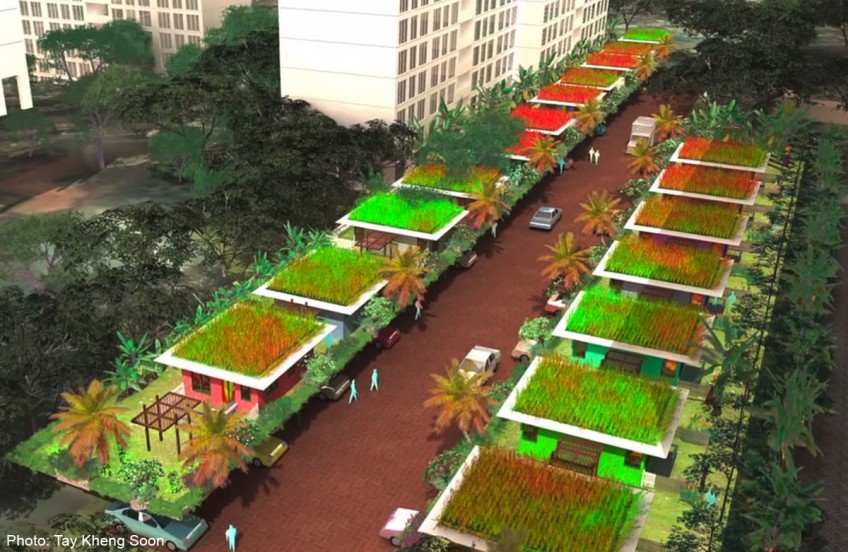Build clubs for active elderly to look after frail

Singapore should grow a network of care clubs manned by healthy senior citizens willing to look after the frail elderly in their midst, suggests architect Tay Kheng Soon.
They can monitor older folk who are alone at home via webcam, plan social activities for peers and coordinate the work of community nurses, secure in the knowledge that when they grow frail themselves, others will care for them.
Tapping active retirees - and possibly even paying them a stipend - will let more elderly people grow old in their own homes and solve the shortage of manpower, says Mr Tay.
A YouTube video he uploaded offers new ideas to meet the care, socialisation and work needs of Singapore's growing army of grey.
To beat the manpower challenge, nurses can be drawn from trainees in nursing schools. Trainee nurses can be allocated to families with care needs who live nearby.
Linking by webcam can help keep costs low. These clubs can also have small cafes and spaces for social and cultural activities.
Nursing homes can be combined with medical clinics, shops, and even schools and parks.
Low-cost shipping containers similar to the ones used in care clubs could be reused for creating small work spaces near housing blocks.
Working from home is economical, but it can be isolating. The small containers plugged into office networks could enable older folk to get out of the home without suffering the physical strain of long commutes.
Mr Tay's plans to integrate the elderly into the heart of community life have found fans among older folk and ageing experts.
Chairman Mary Ann Tsao of the Tsao Foundation, which looks into ways to help people age with dignity, especially likes the idea of supporting older people through community action, such as having care clubs run by mature volunteers, where older people take ownership of the well-being of frail elders.
"Attractive public spaces that integrate activities conducive to all generations, including older people, can reduce social isolation," she added.
"They will also strengthen the kampung spirit."
Retired junior college teacher Anne Lee, 63, likes the "integrated living" concept.
She dreams of having workspaces, care clubs and recreational facilities within walking distance of her home.
"Old people hate commuting. If there is a geriatric needs shop or a good clinic a one-hour commute away, they will simply not go," she said. "That is what needs to change."
KEY IDEAS
$50,000 COTTAGES
One-bedroom cottages for retirees can be built on top of existing open-air carparks in HDB estates.
Prefabricated in Vietnam or China, they can cost as little as $50,000 if land cost is minimised.
Each with a front garden, the cottages will also have green roofs.
This will let retirees remain in the same estate even if they sell their high-rise flats.
COMMUNITY CARE CLUBS
Healthy elderly people will coordinate the care of the frail, knowing that next time it will be their turn to be looked after.
Located in low-cost reused shipping containers in void decks, the care clubs will offer nursing and socialisation services.
SUB-DIVIDE FLATS
A five-room HDB flat can be sub-divided into three studio apartments, each with its own toilet and kitchen.
Retirees could live in one studio unit while selling or renting the others.
This will let them live in familiar surroundings and receive new income.

This article was first published on Sept 28, 2014.
Get a copy of The Straits Times or go to straitstimes.com for more stories.